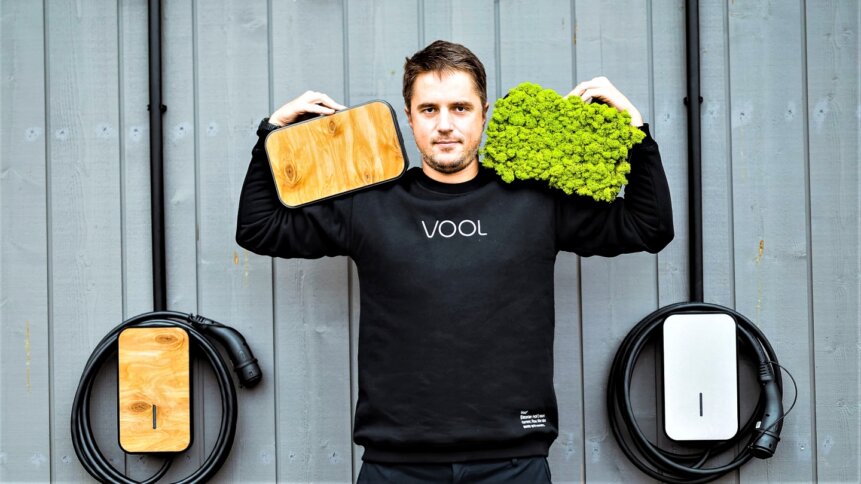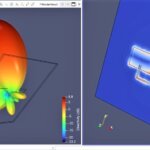VOOL power: accelerating EV charging station technology

|
Getting your Trinity Audio player ready...
|
Estonia has fast become a start up paradise and has a great talent for solving technology problems. Success stories include, most notably, Skype – invented by Estonian engineers in the country’s capital and largest city, Tallinn, in 2003 (eight years later, Skype was acquired by Microsoft for more than USD 8.5 billion). Estonia has invested heavily in digital infrastructure. The Baltic country ranks alongside South Korea, Singapore, Japan, and Finland (Helsinki is only 50 miles north of Tallinn, around 2 hours away by ferry) in using technology to improve daily life. And with motorists ditching their gas-guzzling cars and switching to clean-running, battery-powered vehicles, one of the latest puzzles to solve has been coming up with grid-friendly EV charging station technology.
EV chargers need to be hassle-free for motorists, but without dimming the power grid for other energy users. And, ideally, they should support low-cost operation to promote the transition from fossil fuels. After all, there’s nothing like the prospect of saving money when it comes to influencing consumer behavior. And the adoption of planet-saving technology is surely something to be encouraged. At the same time, EV charging operators need systems that are reliable and support a profitable business model.
Commercializing EV charging infrastructure
Taking up the challenge of commercializing such game-changing EV charging station technology is Estonian start up, VOOL. The Tallin-based firm, which also has operations in Finland, was founded in 2018 by energy experts Juhan Härm (CEO), Sander Vahtras (CPO), and Hindrik Kilter (CTO). And, in 2022, VOOL was awarded EURO 3 million from The European Union’s EIC Accelerator innovation fund. Most recently, the EV charging station technology firm closed a seed investment round, which raised EURO 1.7 million and brings its funding total to EURO 4.7 million.
The financial backing validates VOOL’s vision of providing affordable and easy-to-install EV charging hubs that give electric vehicle owners a much wider choice of charging stations. And, according to the company, VOOL is on track to install 20,000 of its modular EV chargers by 31st December 2023. The Estonian company provides a fresh take on the design of EV chargers, and its product developers are keen that units look their best. “The VOOL Charger is easy on the eye,” writes the company on its website. “It’s got a rugged interior, but a dreamy exterior.” The most striking of the available designs is one covered with a plant-like texture, emphasizing the technology’s green credentials.
And it’s when you dig into VOOL’s EV charging station technology that things get really exciting. As well as providing individual charging stations – which the firm explains come with both plug and socket types, allowing users to charge any model of electric vehicle – VOOL has developed a power management hub too. Hubs make sure that all of the incoming electricity is utilized and prevent blown fuses and overloaded circuits by monitoring networks of EV charging modules.
To understand how the hub works, it’s worth first having a quick recap of electrical power transmission. At the commercial scale, alternating current (AC) electricity is supplied across three conductors and offset in time – so-called three-phase transmission. The tried and tested approach allows energy operators to supply large amounts of electricity to customers over large distances. It also enables load balancing as phase-shifting transformers can pick and choose between the incoming AC channels, which isn’t possible with two-wire domestic power.
Three-phase power boost
“Currently, your dishwasher, charger, and kettle still have access to only a fraction of the full capacity of the grid, even though the whole of Europe is connected to three phases of electricity,” explains Juhan Härm, VOOL’s co-founder and CEO. “We use all three phases and automatically switch between them when needed. This way, we can offer reliable and sustainable automatic charging.” Härm’s comments hint at the company’s longer-term ambitions to ‘bring maximum grid power to everyone’. VOOL is participating in EU-funded research examining the capacity of dynamic grid technology to transmit more electricity to users. And the firm’s scale-up activity starts with EV charging.
VOOL’s customers include Europcar, vehicle-sharing operator ELMO Rent, and Hansabuss – which provides public transport across Scandinavia and the Baltic region of Estonia, Latvia, and Lithuania. Hansabuss is using its Latvian hubs as the starting point for rolling out electric bus operations more widely. And VOOL’s three-phase EV charging station technology is ready for fleet use without major upgrades to power supply infrastructure.
VOOL’s EV charging ecosystem includes a software element too, alongside the vehicle charging modules and hubs. The company has developed both an app for customers and EV charger owners to use, as well as an admin portal for automating enterprise EV charging locations. Cleverly, the app – which shows an overview of charging times and energy consumption – lets users set EV charging times based on electricity market prices. And VOOL claims that this feature could save EV vehicle owners up to 90% of the cost of charging their battery-powered automobiles.
The app also gives households, and other customers, the option of making their private EV charging stations available for public use. Owners can set a margin above the market cost of electricity and collect the profits. Again, highlighting the universal appeal of VOOL’s EV charging station technology, the firm lists Audi, BMW, Hyundai, KIA, Nissan, Skoda, Tesla, Volkswagen, and Volvo as examples of electric vehicles that can be connected to the app.









